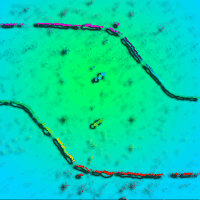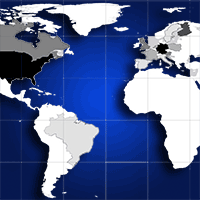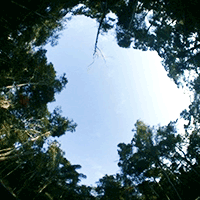
Remote sensing of selective logging in tropical forests: current state and future directions
Colbert M Jackson , Elhadi Adam
iForest - Biogeosciences and Forestry, Volume 13, Issue 4, Pages 286-300 (2020)
doi: https://doi.org/10.3832/ifor3301-013
Published: Jul 10, 2020 - Copyright © 2020 SISEF
Review Papers
Abstract
This paper reviews and discusses the status of remote sensing techniques applied in detecting and monitoring selective logging disturbance in tropical forests. The analyses concentrated on the period 1992-2019. Accurate and precise detection of selectively logged sites in a forest is crucial for analyzing the spatial distribution of forest disturbances and degradation. Remote sensing can be used to monitor selective logging activities and associated forest fires over tropical forests, which otherwise requires labor-intensive and time-consuming field surveys, that are costly and difficult to undertake. The number of studies on remote sensing for selective logging has grown steadily over the years, thus, the need for their review so as to guide forest management practices and current research. A variety of peer reviewed articles are discussed so as to evaluate the applicability and accuracy of different methods in different circumstances. Major challenges with existing approaches are singled out and future needs are discussed.
Keywords
Tropical Forest Disturbance, Selective Logging, Forest Degradation, Forest Canopy Gaps, Disturbance Mapping, Remote Sensing, Forest Monitoring
Authors’ Info
Authors’ address
Elhadi Adam 0000-0003-3626-5839
School of Geography, Archaeology and Environmental Studies, University of the Witwatersrand, Johannesburg, Private Bag 3 Wits, 2050 (South Africa)
Corresponding author
Paper Info
Citation
Jackson CM, Adam E (2020). Remote sensing of selective logging in tropical forests: current state and future directions. iForest 13: 286-300. - doi: 10.3832/ifor3301-013
Academic Editor
Emanuele Lingua
Paper history
Received: Nov 25, 2019
Accepted: May 11, 2020
First online: Jul 10, 2020
Publication Date: Aug 31, 2020
Publication Time: 2.00 months
Copyright Information
© SISEF - The Italian Society of Silviculture and Forest Ecology 2020
Open Access
This article is distributed under the terms of the Creative Commons Attribution-Non Commercial 4.0 International (https://creativecommons.org/licenses/by-nc/4.0/), which permits unrestricted use, distribution, and reproduction in any medium, provided you give appropriate credit to the original author(s) and the source, provide a link to the Creative Commons license, and indicate if changes were made.
Web Metrics
Breakdown by View Type
Article Usage
Total Article Views: 51409
(from publication date up to now)
Breakdown by View Type
HTML Page Views: 39185
Abstract Page Views: 6242
PDF Downloads: 5264
Citation/Reference Downloads: 18
XML Downloads: 700
Web Metrics
Days since publication: 1981
Overall contacts: 51409
Avg. contacts per week: 181.66
Citation Metrics
Article Citations
Article citations are based on data periodically collected from the Clarivate Web of Science web site
(last update: Mar 2025)
Total number of cites (since 2020): 12
Average cites per year: 2.00
Publication Metrics
by Dimensions ©
Articles citing this article
List of the papers citing this article based on CrossRef Cited-by.
References
Selective logging of tropical forests observed using L- and C-band SAR satellite data. In: Proceedings of the “IEEE International Geoscience and Remote Sensing Symposium (IGARSS)”. Milan (Italy) 26-31 July 2015. IEEE Institute of Electrical and Electronics Engineers, Piscataway, NJ, USA, pp. 3870-3873.
CrossRef | Gscholar
Spectral unmixing of forest canopy recovery in selectively logged units in a tropical lowland forest, Costa Rica. In: Anais “XIV Simpósio Brasileiro de Sensoriamento Remoto” [Annals XIV Brazilian Symposium on Remote Sensing]. Natal (Brasil) 25-30 Apr 2009. INPE, São José dos Campos, São Paulo, Brazil, pp. 2539-2546.
Gscholar
Monitoring reduced emissions from deforestation and forest degradation (REDD+): capabilities of high-resolution active remote sensing. PhD thesis, Biology Department, University of Hamburg, Hamburg, Germany, pp. 94.
Gscholar
An integrated remote sensing and GIS approach for monitoring areas affected by selective logging: a case study in northern Mato Grosso, Brazilian Amazon. International Journal of Applied Earth Observation and Geoinformation 61: 70-80.
CrossRef | Gscholar
Challenges and opportunities in mapping land use intensity globally. Current Opinion in Environmental Sustainability 5: 484-493.
CrossRef | Gscholar
Monitoring logging in the tropical forest of Republic of Congo with Landsat imagery. In: Proceedings of the “IEEE International Geoscience and Remote Sensing Symposium (IGARSS)”. Toulouse (France) 21-25 July 2003. IEEE Institute of Electrical and Electronics Engineers, Piscataway, NJ, USA, pp. 2565-2567.
CrossRef | Gscholar
Automated method for measuring the extent of selective logging damage with airborne lidar data. ISPRS Journal of Photogrammetry and Remote Sensing 139: 228-240.
CrossRef | Gscholar
A review of earth observation methods for detecting and measuring forest change in the tropics. Ecometrica, Edinburgh, UK, pp. 2-4.
Gscholar
Green carbon, black trade. Illegal logging, tax fraud and laundering in the World’s tropical forests. A rapid response assessment. INTERPOL Environmental Crime Programme, Arendal , United Nations Environment Programme and GRID-Arendal, Birkeland Trykkeri AS, Spelefjellveien 1, 4760 Birkeland, Norway, pp. 1.
Online | Gscholar
Estimating selective logging impacts on aboveground biomass in tropical forests using digital aerial photography obtained before and after a logging event from an unmanned aerial vehicle. Forest Ecology and Management 433: 162-169.
CrossRef | Gscholar
Improved selective logging detection with Landsat images in tropical regions. In: Proceedings of the “IEEE International Geoscience and Remote Sensing Symposium (IGARSS)”. Toronto (Ontario, Canada) 24-28 June 2002. IEEE Institute of Electrical and Electronics Engineers, Piscataway, NJ, USA, pp. 2078-2080.
CrossRef | Gscholar
Detecting forest degradation in the Congo Basin by optical remote sensing. In: Proceedings of the “ESA Living Planet Symposium”. Edinburgh (Scotland, UK) 9-13 Sept 2013. ESA, Noordwijk, The Netherlands, pp. 19.
Gscholar
Mapping selective logging in tropical forest with space-borne SAR data. In: Proceedings of the “ESA Living Planet Symposium”. Edinburgh (UK) 9-13 Sept 2013. ESA, Noordwijk, The Netherlands, pp. 168-173.
Gscholar
State of the art for tropical forest monitoring by remote sensing: a review carried out for the Ministry for the Environment of Norway and the Norwegian Space Centre. Norwegian Computing Centre, Oslo, Norway, pp. 11.
Gscholar
Integrating forest transects and remote sensing data to quantify carbon loss due to forest degradation in the Brazilian Amazon. In: Proceedings of the Workshop “Assessment and monitoring of forest degradation”. Rome (Italy) 8-10 Sept 2009. Forestry Department, Food and Agriculture Organization of the United Nations, Rome, Italy, pp. 1-17.
Gscholar
Assessing forest degradation from selective logging using time series of fine spatial resolution imagery in Republic of Congo. In: Proceedings of the “IEEE International Geoscience and Remote Sensing Symposium (IGARSS)”. Milan (Italy) 26-31 July 2015. IEEE Institute of Electrical and Electronics Engineers, Piscataway, NJ, USA, pp. 2044-2047.
CrossRef | Gscholar
Levantamento da vegetação natural e do uso da terra no município de Paragominas (PA) utilizando imagens TM/Landsat [Survey of natural vegetation and land use in the municipality of Paragominas (PA) using TM/Landsat]. Boletim de Pesquisa 124, EMBRAPA/CPATU, Bele´m, PA, Brazil, pp. 40.
Gscholar

















